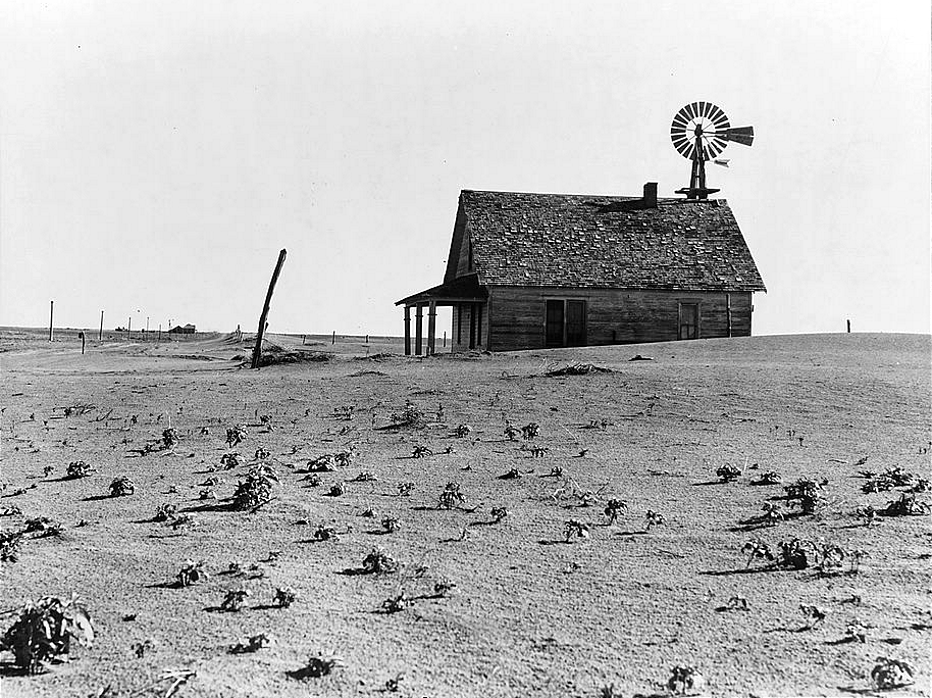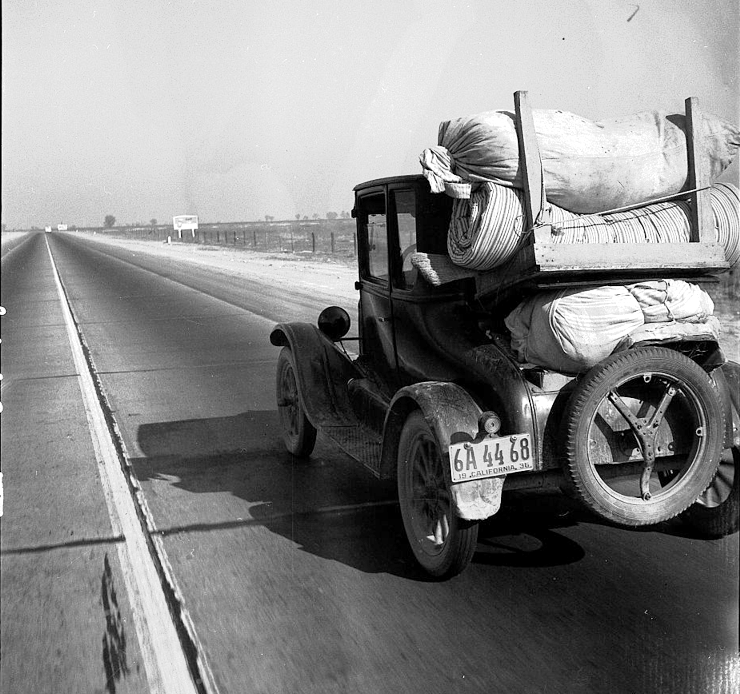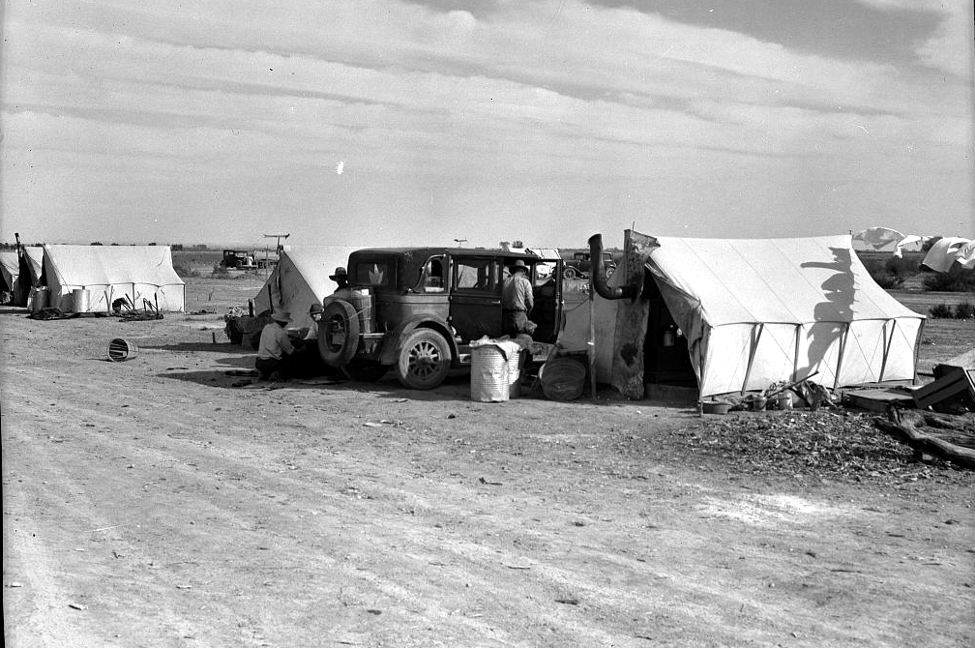Below: A farm in Texas with all its crops ruined for lack of rain,
and wind-blown dirt piled up against the house.

The migrant farm workers
Below: Hundreds of thousands of people from the Dust Bowl area headed to California
with their belongings to try to find work harvesting crops on farms there.

Below: Migrant families often formed campgrounds near farms in California that
they hoped would hire them at harvest time. Desperate for work, they would
take whatever wages were offered, just to earn enough money to buy food.

Many of the migrant farm families that went to California to find work, like the one
shown below, were from Oklahoma. As a result, the nickname "Okies" was given to
many of the migrant workers.

Rain returns to the Dust Bowl - 1939
In 1939 and 1940 rain began returning to normal levels on the Great Plains.
Families like the one shown below could finally plant and harvest crops.
The photo shows the family harvesting beets on their farm in Kansas.

Map by David Burns. All photos are from the
Library of Congress. Some have been edited or resized for this page.
|
Copyright Notice
Copyright 2009, 2020 by David Burns. All rights reserved. |